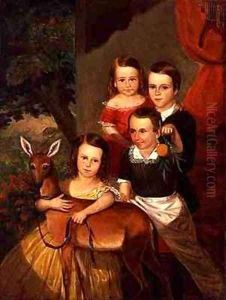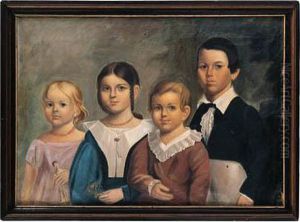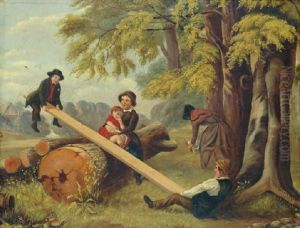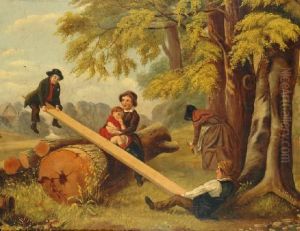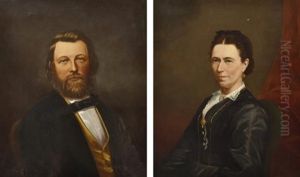Thomas Flintoff Paintings
Thomas Flintoff was an English-born artist known for his work as a portrait painter and miniaturist in the early to mid-19th century. Born in 1780 in England, Flintoff's early life and training as an artist are not well-documented, which is not uncommon for many artists of the period. Despite the lack of detailed records about his training, it is evident from his work that he was skilled in the art of miniature painting, a popular form of portraiture at the time, especially prior to the widespread adoption of photography.
Flintoff immigrated to the United States, where he became active in the art communities of the time. He spent a significant part of his career in the United States, traveling and working in various cities. His work was typical of the itinerant artists of the era who moved from city to city, seeking commissions from the burgeoning middle and upper classes who were eager to have their likenesses captured as a sign of status and prosperity.
During his career, Flintoff painted portraits of many notable figures of the time, which included both miniatures and larger oil portraits. His style was characterized by a strong attention to detail and a desire to capture not just the physical likeness of his sitters but also a sense of their character and social standing. Flintoff's works are valuable not only as pieces of art but also as historical documents that offer insights into the fashion, culture, and individuals of the early 19th century in America.
Thomas Flintoff's contributions to the world of portrait painting in America were part of a broader movement of European artists who influenced the development of American art in the pre-photography era. He passed away in 1840, leaving behind a legacy of work that continues to be studied and appreciated by art historians and enthusiasts. His paintings are held in various art collections and are occasionally displayed in museum exhibitions that focus on early American portraiture.
